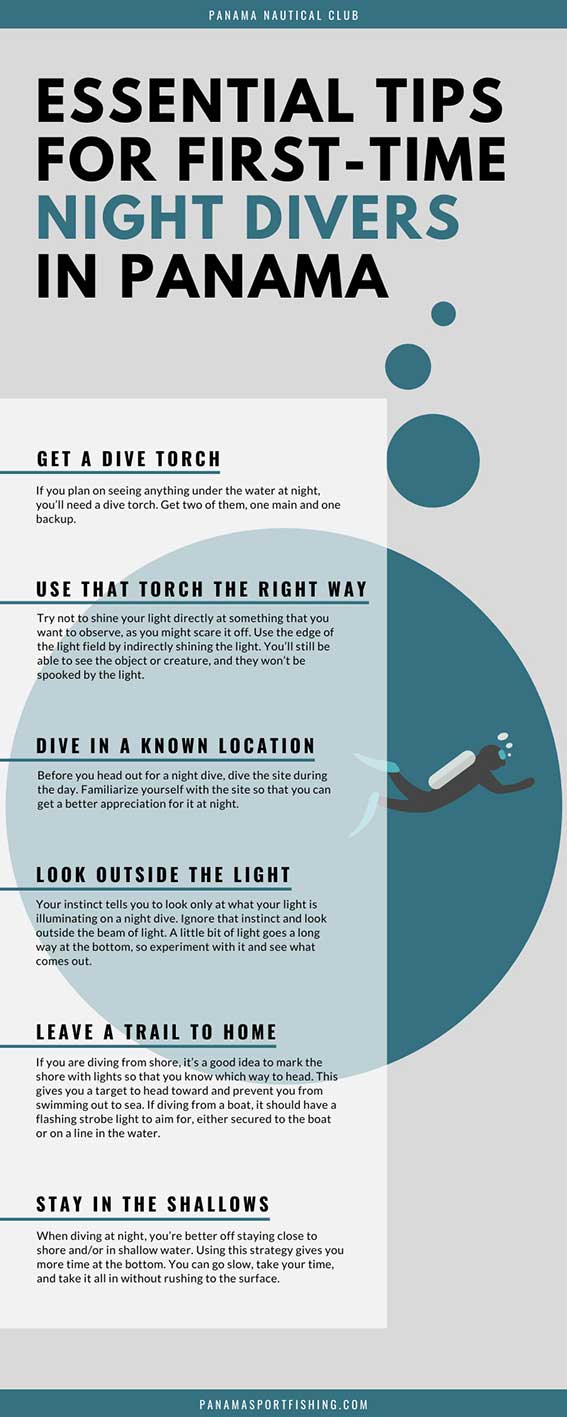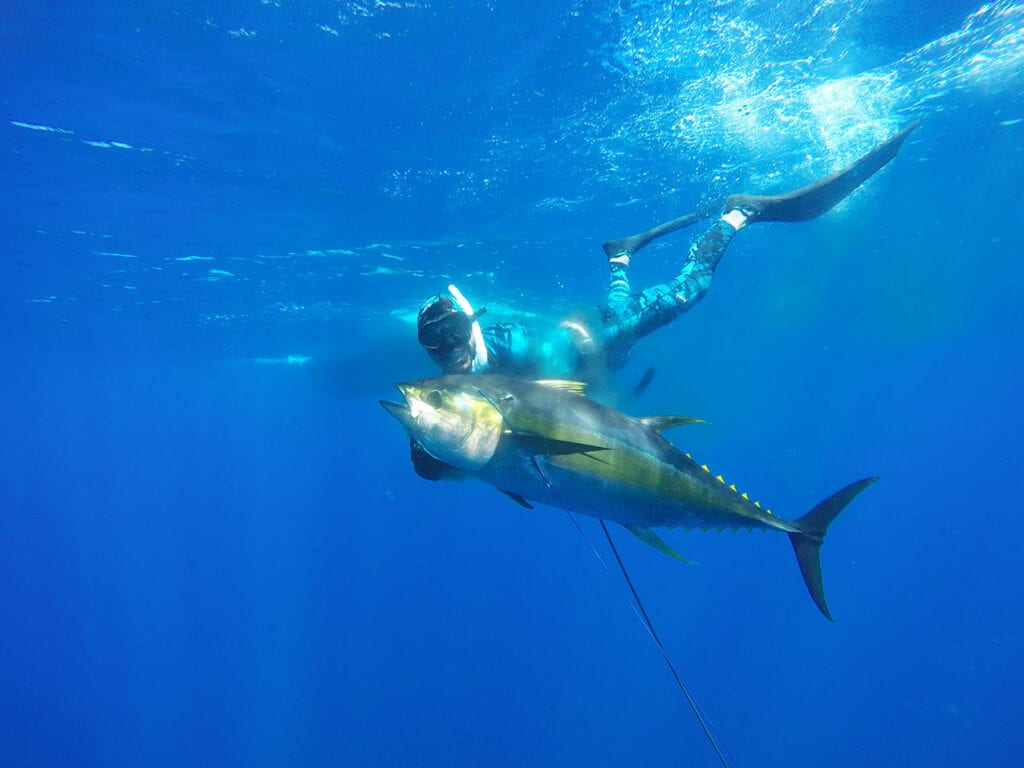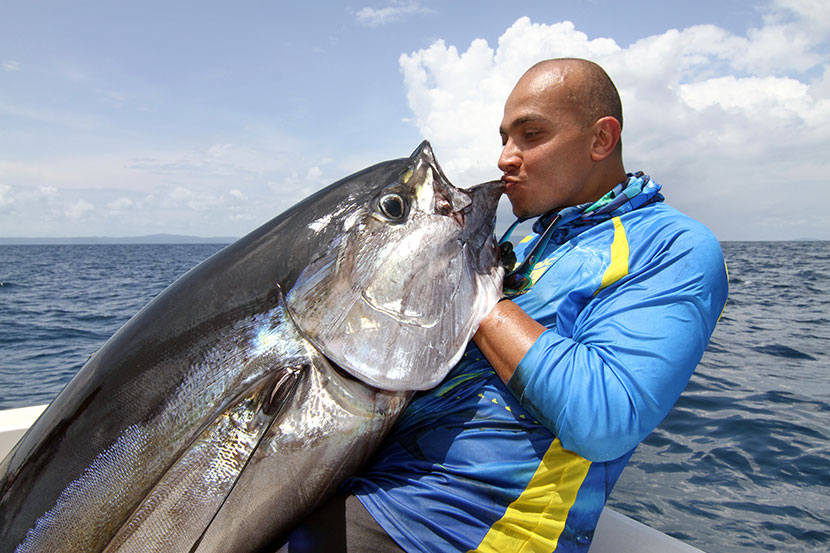Just like Las Vegas, the ocean never sleeps, and there is always something new to discover. Scuba diving is a great hobby, and the ocean is good for more than just diving during the day. At night the same dive spot transforms into a radically different landscape. There is a whole new world under the seas once the sun goes down. Night diving is such a great experience that every diver should try it at least once. You might love it so much that you only want to dive at night. If you are an experienced diver, then rediscover your favorite diving spots and dive at night. Panama is home to some of the best scuba diving and snorkeling sites in the world. Coral reefs, wrecked planes, wrecked boats, and hundreds of islands abound off the coast of Panama. Panama diving sites offer countless opportunities to explore undersea life, but you have to be here to dive them, so book your trip today. Panama Nautical Club is committed to education, and we want our guests to have all the information they need to have a great time. We have put together some essential tips for first-time night divers in Panama. Even if you are an experienced diver, a little refresher never hurts.
Get a Dive Torch
If you plan on seeing anything under the water at night, you’ll need a dive torch. Get two of them, one main and one backup. The primary torch should be larger and more powerful than the backup. The backup needs to be smaller, storable somewhere on your person, and accessible in an emergency. There are no minor incidents under the water at night, only emergencies. Know that if your primary light fails and you have to pull your backup, it’s time to head to the surface because the dive is over.
Use That Torch the Right Way
When on a night dive, try to be a good guest. Keep in mind that the marine life that comes out at night doesn’t like bright lights shining in their eyes. Try not to shine your light directly at something that you want to observe, as you might scare it off. Use the edge of the light field by indirectly shining the light. You’ll still be able to see the object or creature, and they won’t be spooked by the light. Sweep the light side to side until you see something interesting, then move in for a closer look.
Dive in a Known Location
Before you head out for a night dive, dive the site during the day. A day dive will give you a good feeling for what kind of structures and marine life are down there. Familiarize yourself with the site so that you can get a better appreciation for it at night. Wreck sites with their compartments, chambers, and external structures are dangerous enough during the day. At night you can easily tangle up in cables or ropes and get into trouble. Diving at night can be stressful in a way that diving during the day is not. The dark conceals many things under the water, and the sensory deprivation can play tricks on you. Know what kind out landscape is down there and eliminate some of the stress and worry. Starting the dive at dusk, just before sunset, is a good way to introduce yourself to night diving. You can watch the sun go down and watch the light slowly change under the water.
Look Outside the Light
Your instinct tells you to look only at what your light is illuminating on a night dive. Ignore that instinct and look outside the beam of light. Just as when you’re running around at night on land, your eyes will adjust, and you will be able to see things beyond the light eventually. Beginner night divers fall into this trap and miss what is going on around them. Never turn off your light but take your free hand and obscure the light and let your eyes adjust. Point the light up toward the surface and see what is attracted to the light, like squids and even sharks. Covering the light helps you to see the bioluminescent creatures under the water like plankton, algae, and jellyfish. A little bit of light goes a long way at the bottom, so experiment with it and see what comes out.
Leave a Trail to Home
It’s easy to get disoriented at night and lose your way once you surface. If you are diving from shore, it’s a good idea to mark the shore with lights so that you know which way to head. Strategically place the lights on the shore so you don’t confuse them with any other lights around you. Put two lights close together at your entry point and a third farther away. This gives you a target to head toward and prevent you from swimming out to sea. If diving from a boat, it should have a flashing strobe light to aim for, either secured to the boat or on a line in the water. Be careful when surfacing and always keep your light in front of you. The darkness is pervasive at night, and you can swim right into the hull of the boat if you’re not careful.
Stay in the Shallows
When diving at night, you’re better off staying close to shore and/or in shallow water. Using this strategy gives you more time at the bottom. You can go slow, take your time, and take it all in without rushing to the surface. On your first dive, you will want all the time you can get. At night the colors are vibrant and more vivid than on a day dive. The colors pop and are rich and nuanced, kind of like looking at things under a black light. The change in the intensity is because the structures at the bottom absorb the sunlight during the daytime, washing out the colors. On a night dive, the light source—your torch—is never more than a few feet away, so the water doesn’t take away from the light spectrum.






